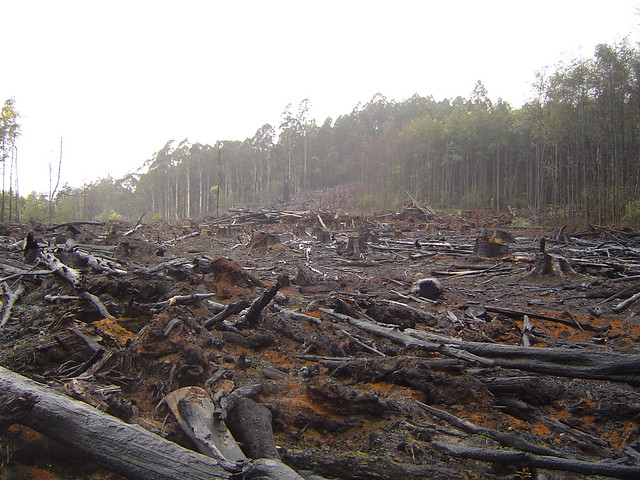- About
- Topics
- Picks
- Audio
- Story
- In-Depth
- Opinion
- News
- Donate
-
Signup for our newsletterOur Editors' Best Picks.Send
Read, Debate: Engage.
| March 02, 2018 | |
|---|---|
| topic: | Transparency and Corruption |
| tags: | #land rights, #TTransparency International, #GIS technology, #Data mining, #satellite technology |
| located: | Cameroon |
| by: | Israel Bionyi |
The English speaking parts of Cameroon - the Northwest and Southwest regions - have been making national and international headlines since 2016. Mainly because of the Anglophone crisis is becoming extreme.
Far from the limelight, tensions are overflowing as over 40, 000 people have reportedly fled their homes.
Unfortunately, practices of land grabbing from influential individuals and corporations recorded in these regions over the years has not died out. Displaced individuals now risk dispossession.
Land titles are hard to get
When it comes to matters of land rights in Cameroon, the 1974 land law is often flagged. However, the law seems out-dated and is being reformed. Long, cumbersome and expensive procedures for obtaining land titles render the legislation vulnerable. Communal lands are not titled and the law does not recognise it. Under the law, communal lands, including farmlands are classified as unregistered, belonging to the states.
With land titles so difficult to get, people often feel compelled to bribe officials to get access. Unsurprisingly, a Transparency International (TI) survey found many people with land titles in Cameroon guilty of bribing their way to it. In fact, corruptors made up to 99% of the respondents of TI’s survey.
Perhaps this accounts for why only about 2 percent of the land in Cameroon is documented, according to a 2009 African Development Bank study. Community Assistance in Development (COMAID), a local NGO estimates that before 2016, four out of every ten cases that go to courtrooms of the Northwest region were land-related.
Data and GIS technology paving the way
Using satellite imagery, GPS devices, land use maps, data collection forms and village land registrars, Christian Jitar Taku; Coordinator of COMAID teaches communities to protect their lands.
Interest in doing this erupted when surveying in 2012, the Mbaw plain situated some 182 km from Bamenda and 439 km from Yaoundé Jitar found that chiefs in the 13 villages that share the plain did not know its surface area. In addition, “I discovered potentially 60% of the land was grabbed,” says Jitar.
Regrettably, between the survey, tensions broke out in 2013 in Nyirong village over disputed lands. Women groups complained of shrinking farming spaces and youth expressed anger over landlessness.
Nevertheless, help came from the International Land Coalition sponsored project, Enhancing Land Rights for Local Communities. The project enabled Jitar to acquire satellite images from Landsat and work with communities to develop village land use maps.
“Our work helped to set up land registrars at the communities, a six-step process to acquiring lands, a village land consultative board with youth and women representatives and a reserved 300 hectares of land for village use,” say Jitar proudly.
By copying the embed code below, you agree to adhere to our republishing guidelines.
